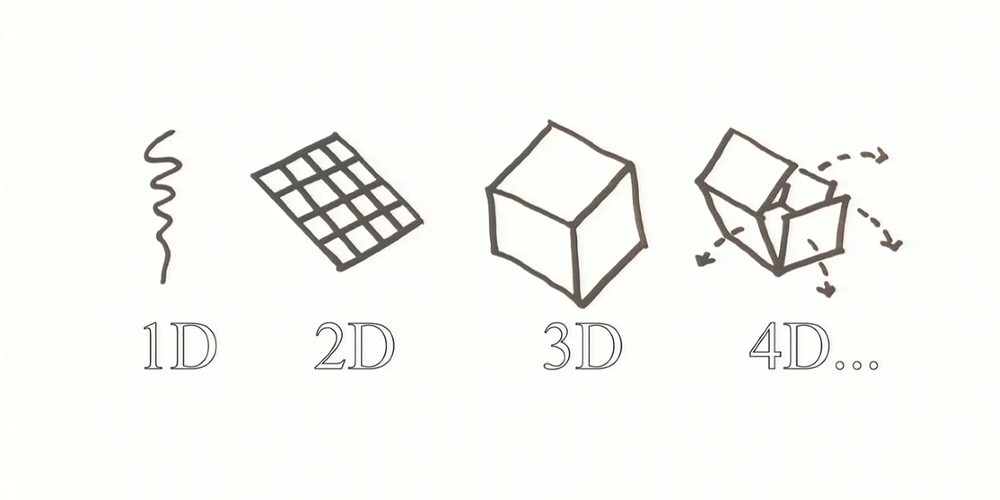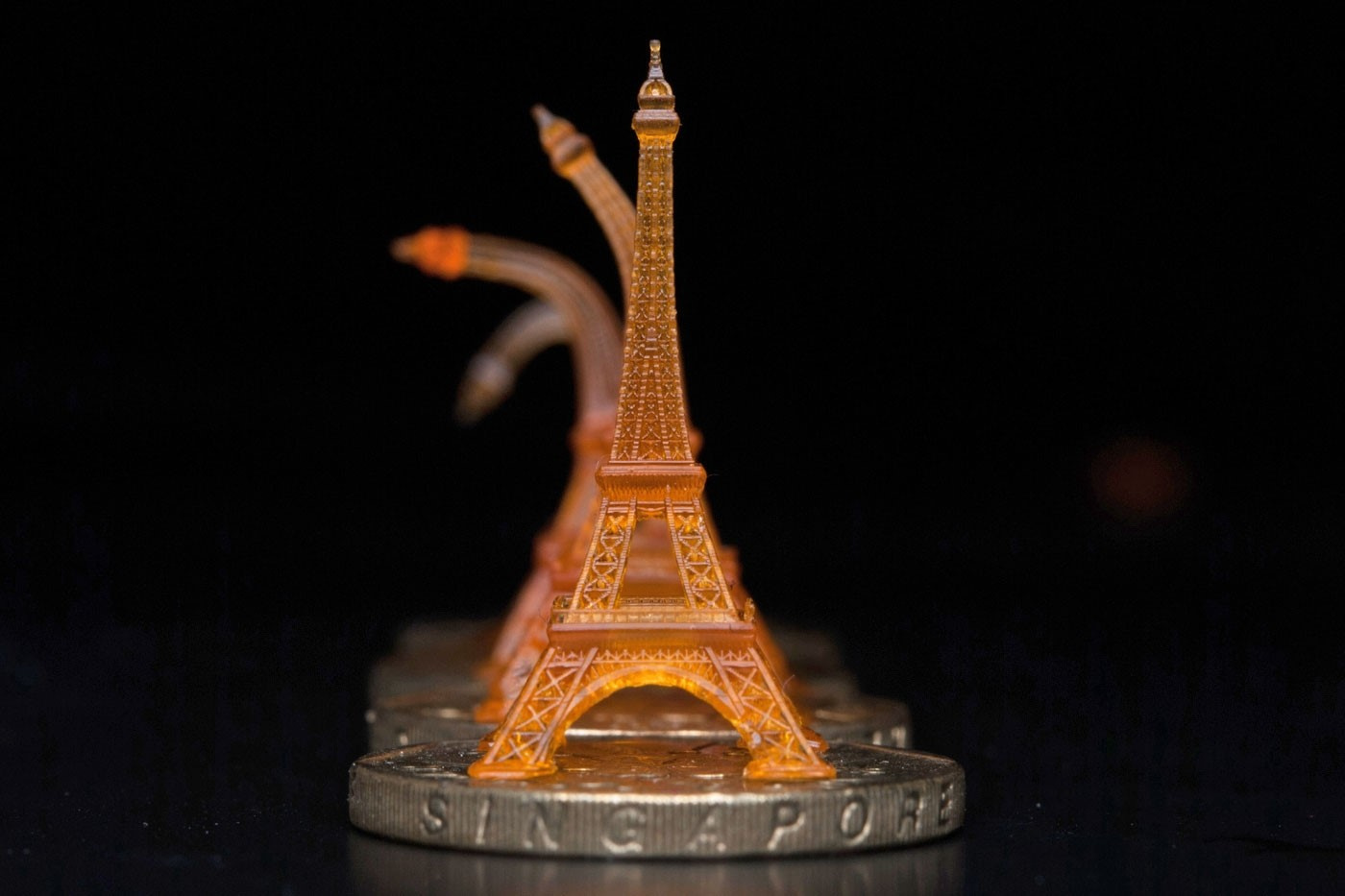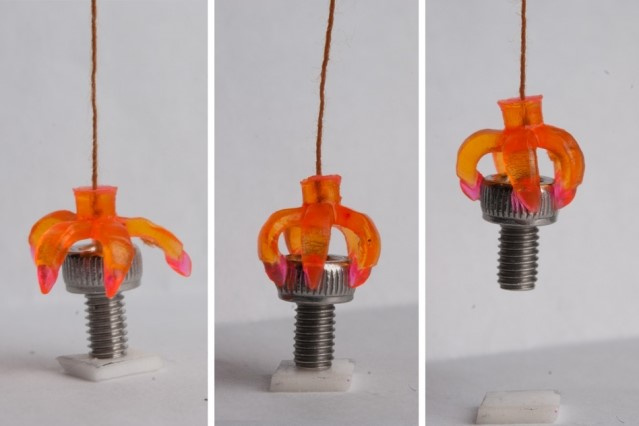4D printing: new materials, changing characteristics and shape

Usually, 4D means four-dimensional space in which four-dimensional objects exist - tesseract, icositrachor (has no analogues in the three-dimensional world) and the like. Several years ago, the term 4D began to be used to denote a special technology of printing objects that change their characteristics over time. Thus, in 4D printing, the “fourth” is not a dimension, but a parameter with which the position (possibly, as a function of the object) of the object is connected.
Technology 4D-printer can hardly be called revolutionary in comparison with conventional 3D printing - the object is also created layer by layer. The most interesting thing happens later, when the finished object begins to change. And here it all depends on what material is used in the printer. Special materials change under the influence of water, heat, light, mechanical action, and can also be programmed to certain actions.
Let's see why we need 4D printing and what the world looks like, built on the basis of things that change their shape and behavior.
Future cars

')
Last year, BMW presented what the cars of the future will look like. The concept was not without the use of 4D. As planned by the engineers, the car body consists of moving triangular sections printed on a 4D printer. Such parts will have integrated functionality, which is now achieved by the production of different parts and the assembly of one mechanism from them.
Due to the use of special materials similar in characteristics to carbon fiber, each section will have programmed functions from the time of production. For example, most of the coverage will serve wheel niches created for better aerodynamics. During the turn, the triangular sections stretch, and the tires do not rub against the arches.
A visual demonstration of the possibilities of the concept car, created with the help of four-dimensional printing:
Reshaping upon contact with water
A team of scientists at Harvard University drew attention to plants that react and change their shape in response to environmental stimuli. Hydrogel composite structures have been developed that change shape when immersed in water.

The object in the form of an orchid flower was printed with hydrogel composite ink containing specifically directed cellulose fibers. To give wood fibers the right direction, they were mixed with acrylamide hydrogel. When immersed in water, the resulting substance changes its geometric dimensions in a predetermined way.
Composite ink can produce products of different shapes. Moreover, you can change the composition of the material to obtain certain properties, such as electrical conductivity or biocompatibility.
Researchers at the Massachusetts Institute of Technology Self-Assembly Lab have developed a 2D template that, when immersed in water, stacks into a cube. To print Self-Assembly Lab, use the Stratasys Objet260 Connex1 printer, which allows you to work with various materials (including rubber-like and polypropylene).
The laboratory has created many diverse products capable of independently taking the desired shape or self-assembling. They showed the laces that will lace themselves and pieces of furniture that are laid out on their own.
Space protection

Using 4D printing, NASA engineers created a metallic fabric to protect satellites from damage and radiation, as well as to produce flexible antennas. The fabric is a kind of "chain mail", created from pieces of silver and other metals. The material can be repeatedly bent, unbend, stretch and compress. Each side of the fabric has its own properties, reflects or absorbs light and heat. Despite its flexibility, the fabric is extremely difficult to tear. It is planned that satellites will be packed into protective material before being launched into space, or with it will be used to shield space suits and habitable modules.
Military technology

The International Nanotechnology Institute at Northwestern University received a five-year grant from the US Department of Defense to develop a 4D printer. The four-dimensional printer will be used for research in the field of chemistry, materials science and in the areas related to defense. It is assumed that 4D printing will allow the creation of new chemical and biological sensors, designs and materials for microchips.
Currently, progress is hampered by the lack of low-cost equipment capable of printing with ultra-high resolution (approximately 1000 times less than the thickness of a human hair) made of hard materials (metals and semiconductors) and soft materials (for example, organic).
A four-dimensional printer will become the basis of a new generation of tools for developing architectures in which materials that form the functional components of electronics can be combined with biological objects.
Shape memory

A polymer model printed on a 4D printer is restored after deformation.
Back in 2013, researchers at the University of Colorado developed a 4D printing technique, incorporating polymer fibers with a “shape memory effect” into composite materials used in traditional 3D printing. As examples of the application of technology were called solar panels, able to roll up and unfold for transportation, automotive coatings that adapt to the environment, as well as military uniforms, changing the type of camouflage or more effectively protect against gas or fragments.
Three years later, an integrated group of scientists from the Singapore University of Technology and Design, MIT and the Georgia Institute of Technology, developed a new 4D printing method based on the effect of light on photosensitive materials. The new printing technique is capable of creating elements as thick as human hair.

A solution of a photosensitive polymer was poured into the printer and the desired object was projected layer by layer, processing the material with ultraviolet light. To verify that the polymer is able to recover from deformations, the researchers printed a soft manipulator, which is closed in the free state. With it, scientists were able to successfully capture small objects (such as screws).
Already at this stage, this technology can be adapted for real use - for example, to create capsules that release substances with increasing body temperature.
Printing in medicine

Doctors from Shaanxi Province in northwestern China conducted a successful and rare tracheal operation using four-dimensional printing technology. Doctors inserted a tubular tracheal stent to the patient to keep the airways open. The biomaterial polycaprolactone, which dissolves with time, was used for the production of the stent - biodegradation in the human body occurs slowly, about 3 years. The doctors determined in advance the time of dissolution of the printed stent, and the patient will not need to undergo another surgery to remove it.
A similar case occurred in the United States. Garrett Peterson was born with a malformation of the bronchi - bronchomalacia, when the cartilage is not solid enough. Ventilation of the bronchus was impaired, and the child spent his whole life at the University of Utah hospital on artificial ventilation supporting life.
Meanwhile, the University of Michigan developed a three-dimensional printing tire that could eventually collapse inside the body without any consequences, but at the same time could keep the airways open for two to three years - enough to restore bronchial cartilage.
After creating the virtual model, the printer prints the layers of polycaprolactone in the form of a specific trachea. Although the process of creating individual stents may seem difficult, it takes only one day.
It is likely that 4D biomaterials sooner or later go far beyond respiratory diseases. Already studied the problems of facial reconstruction and restoration of the ears.
* * *
In general, the majority of scientists working in the field of four-dimensional printing predict explosive growth of objects and materials of four-dimensional printing in the next five years.
Source: https://habr.com/ru/post/403963/
All Articles